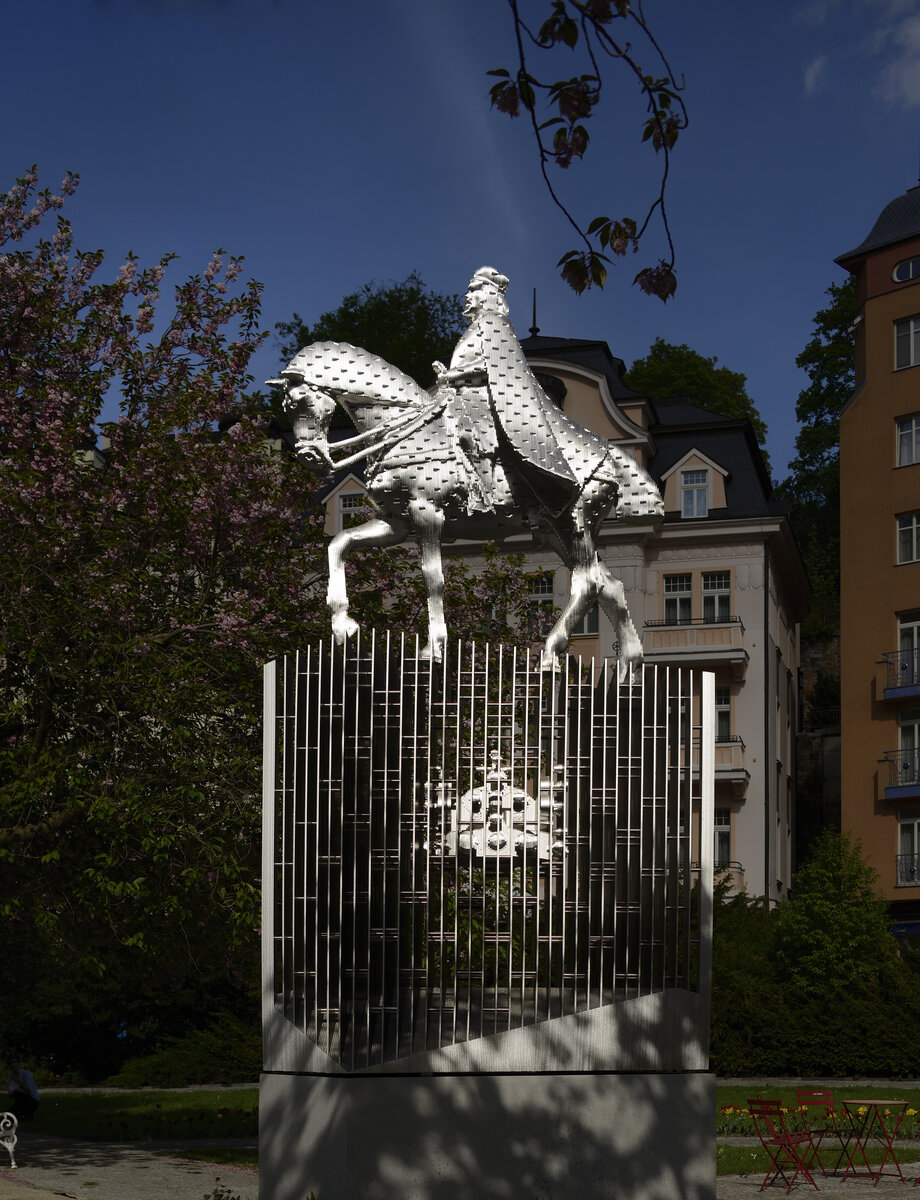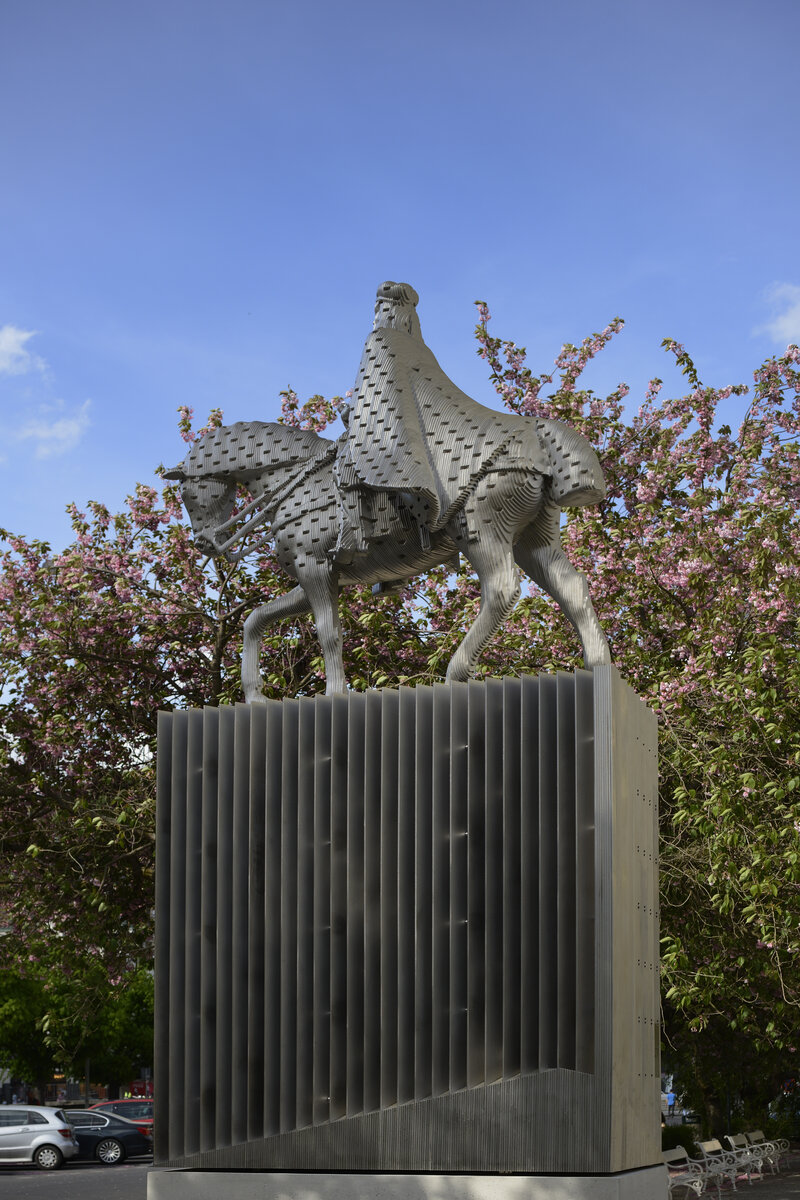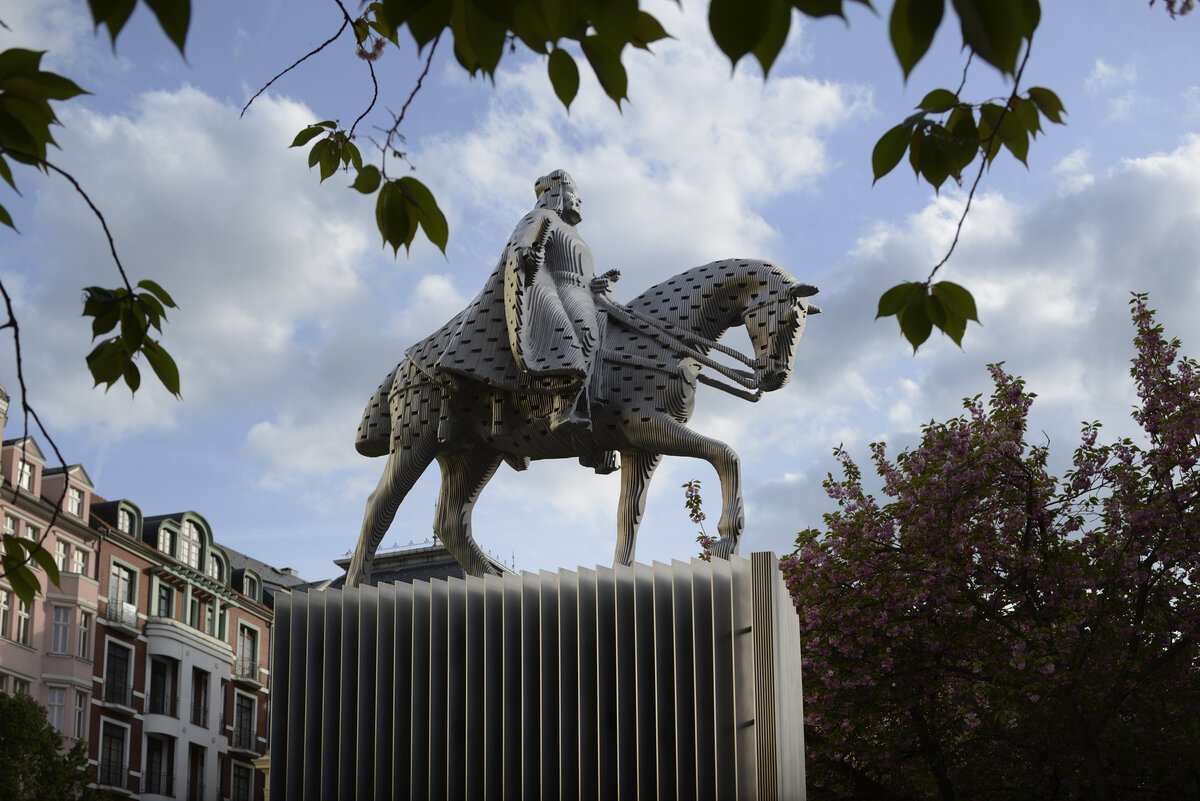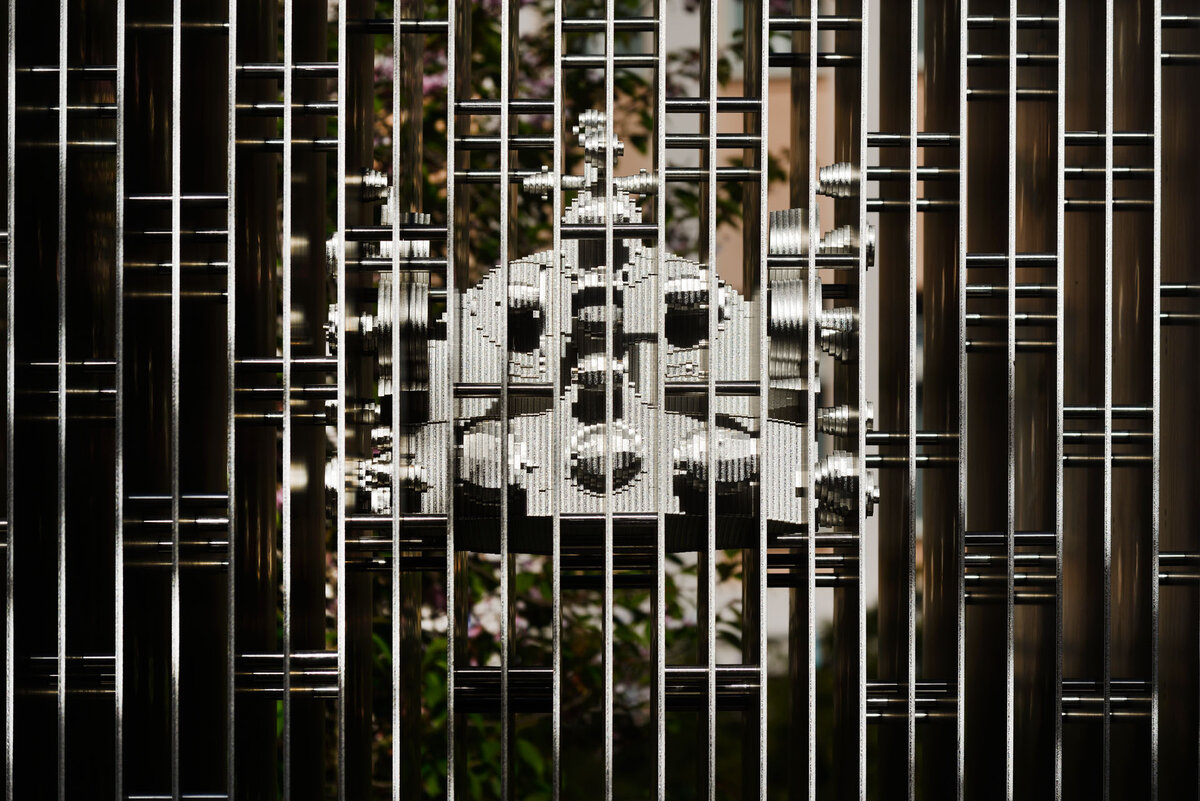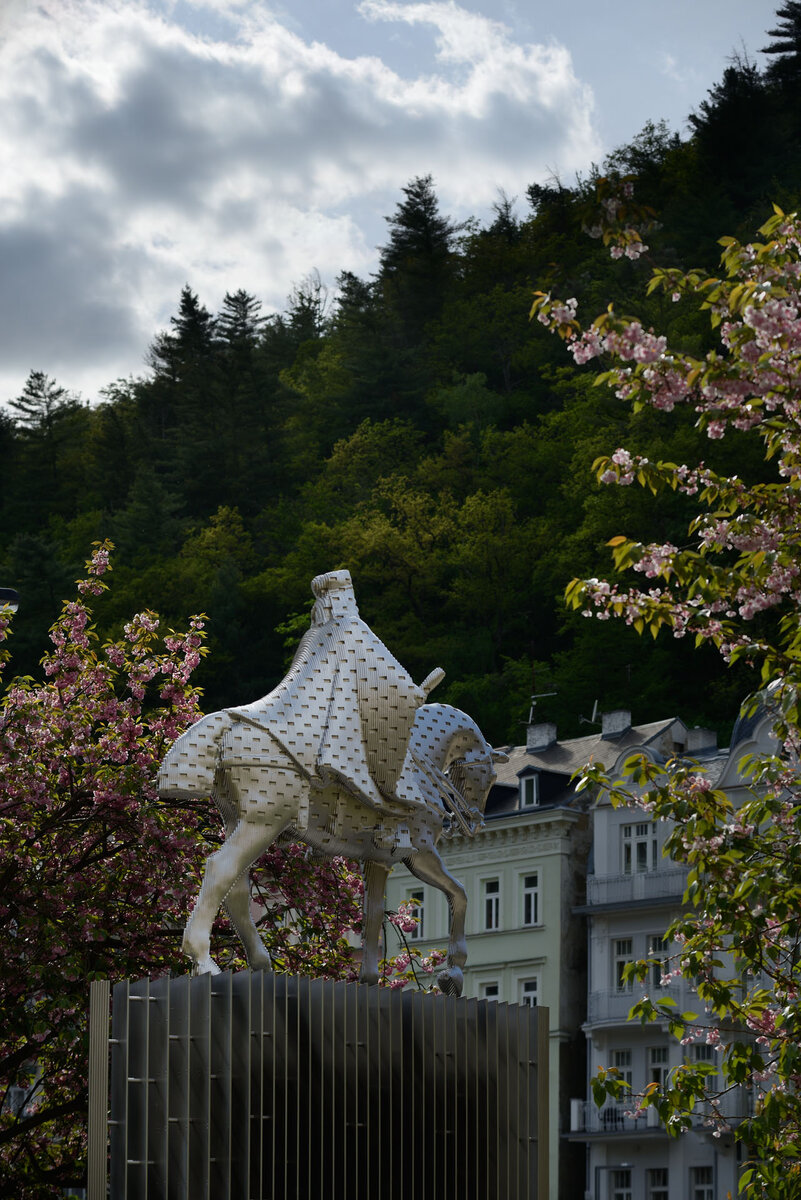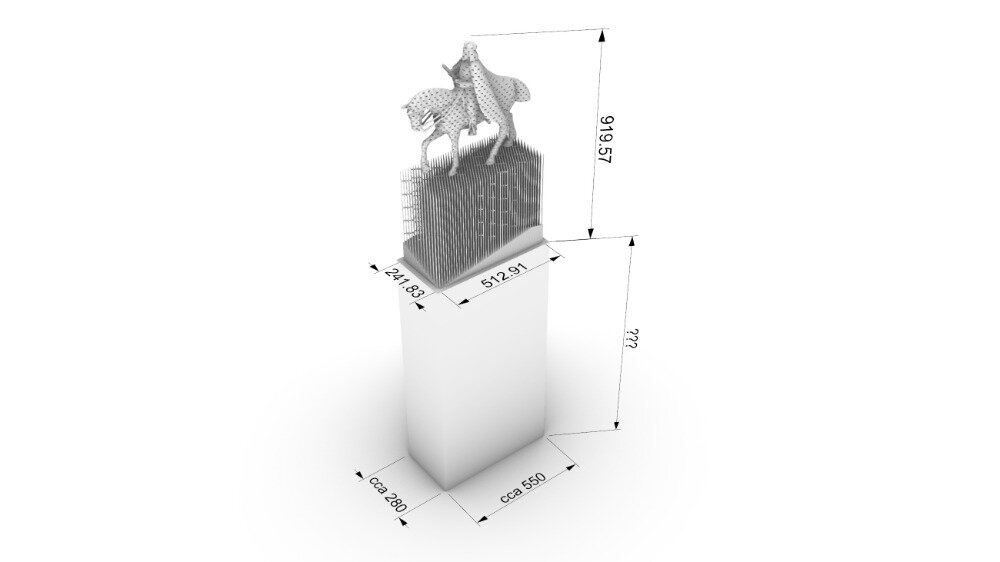| Author |
Prof. Akad. Sochař Michal Gabriel / spoluautor Ing. arch. Michael Gabriel |
| Studio |
Michal Gabriel |
| Location |
Divadelní, Divadelní nám. 253, Karlovy Vary |
| Investor |
- |
| Supplier |
FIRMA KASPER |
| Date of completion / approval of the project |
June 2022 |
| Fotograf |
- |
Monument to Charles IV. is a memory of the glorious past materialized in a contemporary material using the technologies of the future.
The design is based on a traditionally created modeled statue of a rider on horseback, with hints of historical clothing and other details and a right hand gesture in which the figure of rider and monarch holds a deed. Instead of a physical weapon, he holds a diplomatic weapon. An enlarged spiritual symbol is then hidden in the plinth, on which he also supported his rule - the Crown of St. Wenceslas.
Stainless steel cut according to the digital model in layers, connected to the designed shapes of the sculpture. The connection of the past represented by the realistic shapes of the rider, horse and crown with the present, which is referred to by the mass of the sculpture made of stainless steel. A look into the future is present in a new way of working with sculpture and matter, as well as in new technological and digital possibilities for working with shapes. These enable the rider, the horse and the crown to be naturally connected to the lamellar plinth, or the mass of the plinth to become transparent in a certain view, so that an enlarged St. Wenceslas crown enclosed inside the plinth can appear.
This non-declamatory and non-verbal connection of the past, present and future in one unit of a traditional sculpture is, apart from commemorating the most important personality of our history, the main idea of the monument.
Due to the material and technology used – layered cut steel sheets – I worked with details only in rough outlines. The surface of the sculpture is covered with a vertical structure of cut and contoured sheet metal.
The contours go all the way to the plinth, where they are diluted into a partially transparent lamellar structure that allows you to see the shapes of the St. Wenceslas crown. The main motivation for choosing such a relatively complex sculptural technology was the possibility of transitioning from solid shapes to lamellar semi-transparent matter and enclosing other objects in it, in this case a monumentalized crown.
Another reason is the possibility to overlay and blur the detail and thus focus attention on larger wholes. The strict vertical structure of the cut steel sheets does this with surprising realistic conviction. The shine of the cut steel sheet reacts very beautifully to the light changes that take place around the statue during the day.
Over time, the sharp reflections will soften, but they will never stop reflecting light. From a sculptural point of view, the durability of the material, which can withstand time, is also important. In order to soften the transition between the lamellar sparse structure of the plinth and the full structure of the mass of the sculpture placed on the plinth, the sculpture is covered with a horizontal structure. A simple tile ornament cuts through the entire sculpture like a print. From a distance, it resembles the pattern of ermine cloaks, but mainly it lightens the entire statue.
Technology
I have already created several smaller sculptures made of stainless steel sheets, and the resulting effect has always exceeded my imagination. I came to this way of working myself after many years of experience in the field of digital and classical sculpture. Not only that would be enough, I also had to find a producer who is capable of creative collaboration. This was achieved with the company Kasper kovo. Thanks to this, I can enter the competition with just this proposal. As far as I know, no one has yet taken this path, and it would be a great honor for me and our entire creative team to create the first, large exterior sculpture using this technique and for this personality.
Specifications
The sculpture is composed of 280 layers of 10 mm thick sheet metal. The height of the statue, including the steel lamellar plinth, is 4.8 m, about 24 tons. The individual layers will be connected by pins and welded. Wei
Green building
Environmental certification
| Type and level of certificate |
-
|
Water management
| Is rainwater used for irrigation? |
|
| Is rainwater used for other purposes, e.g. toilet flushing ? |
|
| Does the building have a green roof / facade ? |
|
| Is reclaimed waste water used, e.g. from showers and sinks ? |
|
The quality of the indoor environment
| Is clean air supply automated ? |
|
| Is comfortable temperature during summer and winter automated? |
|
| Is natural lighting guaranteed in all living areas? |
|
| Is artificial lighting automated? |
|
| Is acoustic comfort, specifically reverberation time, guaranteed? |
|
| Does the layout solution include zoning and ergonomics elements? |
|
Principles of circular economics
| Does the project use recycled materials? |
|
| Does the project use recyclable materials? |
|
| Are materials with a documented Environmental Product Declaration (EPD) promoted in the project? |
|
| Are other sustainability certifications used for materials and elements? |
|
Energy efficiency
| Energy performance class of the building according to the Energy Performance Certificate of the building |
|
| Is efficient energy management (measurement and regular analysis of consumption data) considered? |
|
| Are renewable sources of energy used, e.g. solar system, photovoltaics? |
|
Interconnection with surroundings
| Does the project enable the easy use of public transport? |
|
| Does the project support the use of alternative modes of transport, e.g cycling, walking etc. ? |
|
| Is there access to recreational natural areas, e.g. parks, in the immediate vicinity of the building? |
|
